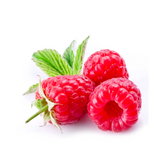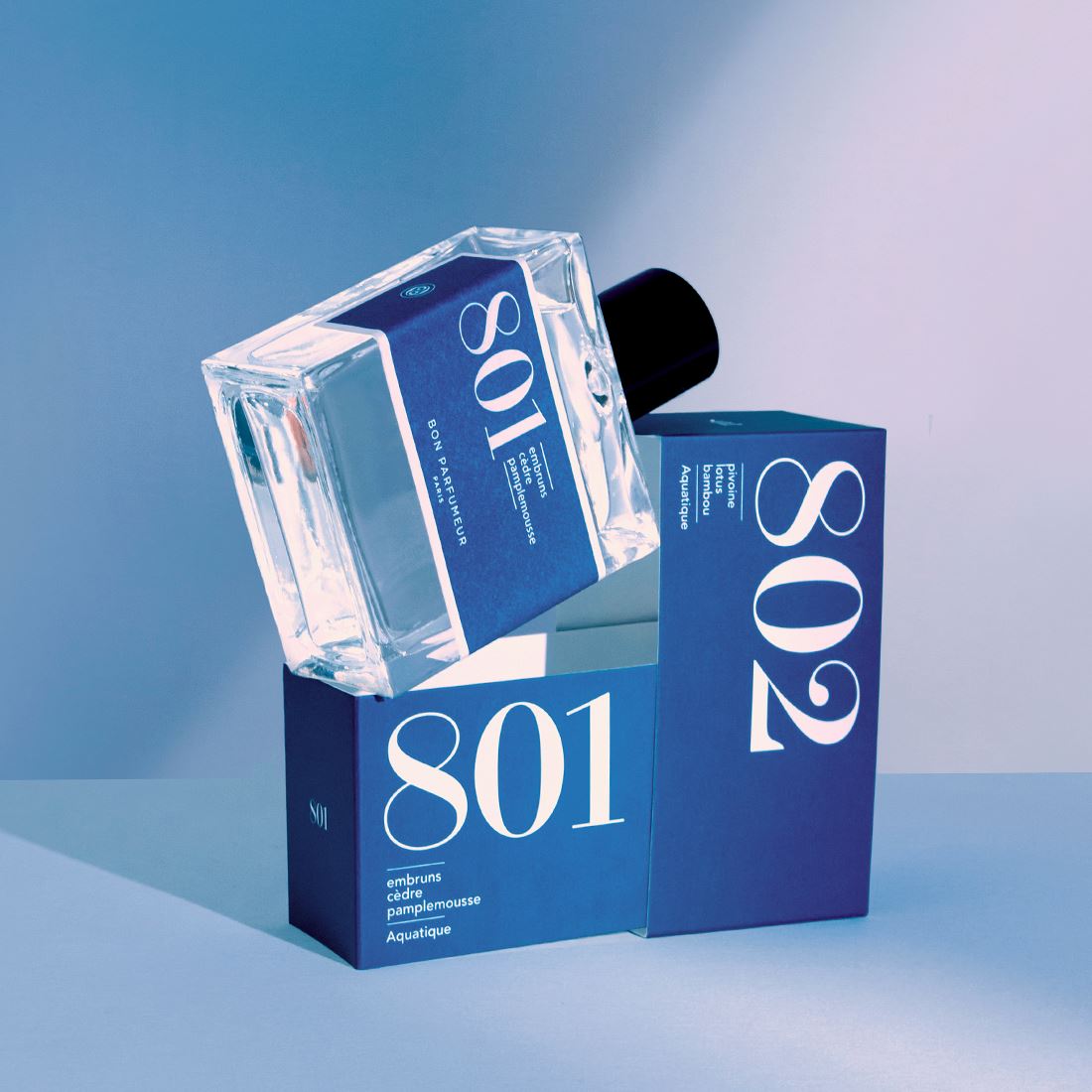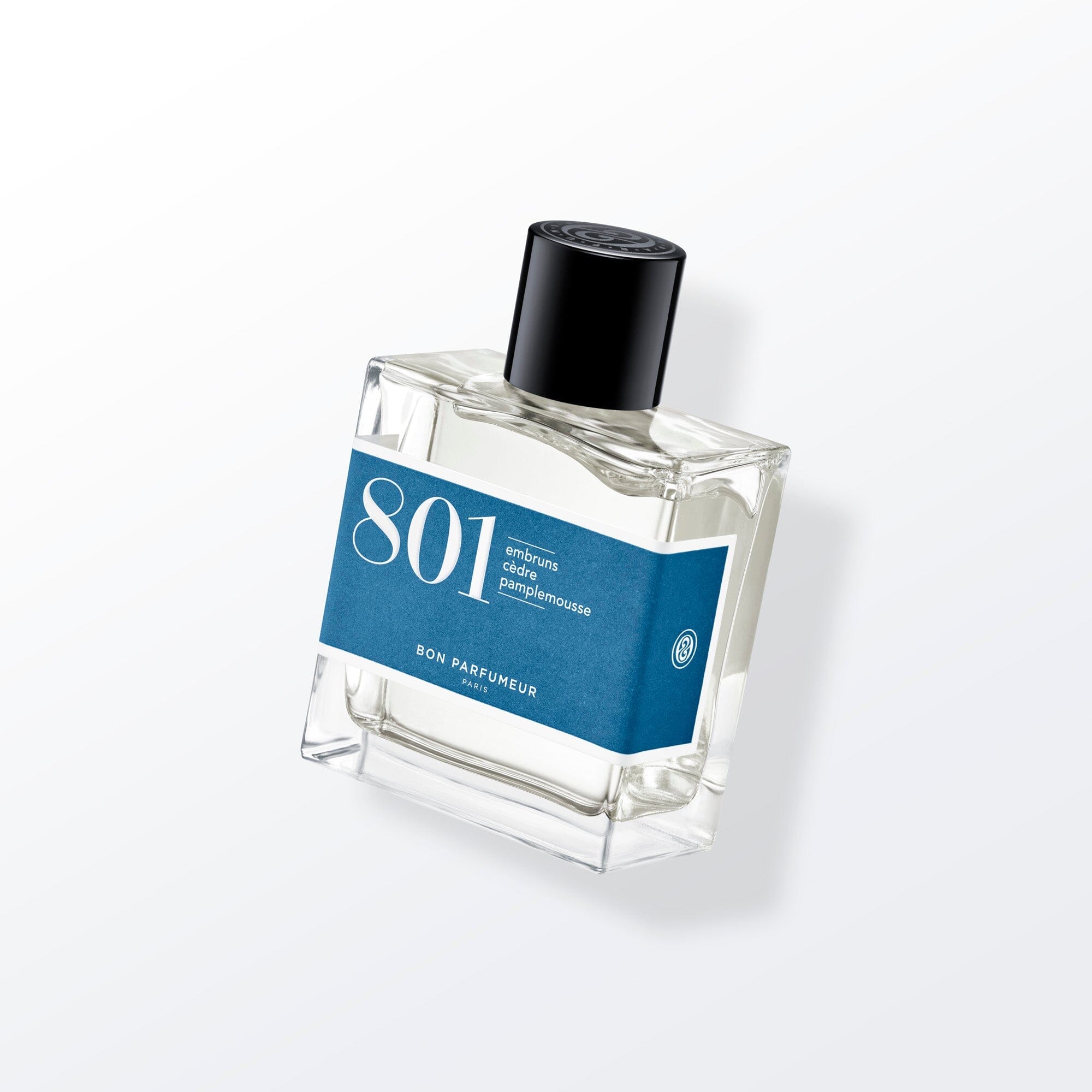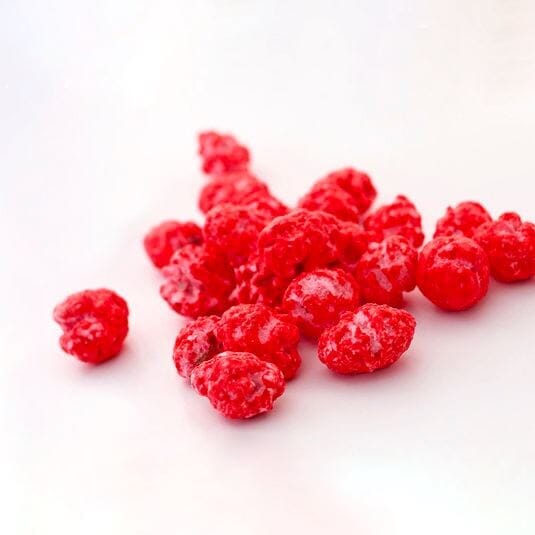Grapefruit fragrance
Discover our sensational 801 range, with a top note of vibrant grapefruit. Dive into the captivating world of this scent through our scented cream and soap, and of course our 801 eau de parfum .
Let yourself be intoxicated by the vibrant and sophisticated freshness of grapefruit, to create a unique and unforgettable olfactory experience.
Name and etymology of grapefruit
Grapefruit is a citrus fruit belonging to the Rutaceae family. Originally called the "Barbados apple," it was later named "pamplemousse" because of its grape-like skin. Its name comes from the Dutch word "pompelmoes," meaning "large lemon."
History of grapefruit
Grapefruit, also known as "citrus paradisi," is a citrus fruit native to Barbados in the Caribbean. The fruit was discovered there in 1750, but it wasn't until the 1800s that it began to be cultivated commercially. It is therefore native to the Caribbean and was introduced to Europe in the 17th century.
Origin of grapefruit
Grapefruit is the result of a cross between a sweet orange and a pomelo, a larger and more bitter citrus fruit. After its discovery, it quickly gained popularity in tropical regions around the world. It is often used in cooking for its refreshing, tangy taste, as well as its health benefits.
Grapefruit cultivation method
Grapefruit is grown primarily in tropical or subtropical climates, in warm, humid conditions. It can be grown in orchards or plantations, with a range of different growing techniques depending on local conditions and agricultural practices. Common growing methods for grapefruit include row cultivation, high-row cultivation, and growing in pots or containers.
Farmers must also consider factors such as soil quality, irrigation, and fertilization to produce healthy, high-quality fruit. Grapefruit is a demanding crop, requiring careful attention to detail to achieve optimal production.
Grapefruit producing regions
Grapefruit is grown in many parts of the world, but the main producing regions are the United States (Florida and California), Mexico, China, Thailand, India, and Israel. Each of these regions produces grapefruit varieties that differ slightly in taste, texture, and skin color.
Grapefruit planting
Planting grapefruit is an important step in growing this citrus fruit. To begin, it's essential to choose a sunny, well-drained location to prevent waterlogging around the roots. The soil should be nutrient-rich and slightly acidic.
It is recommended to plant grapefruit in spring, when temperatures are milder. Before planting, it is important to prepare the soil by working it deeply and adding organic fertilizer.
The planting hole should be twice the size of the plant's root ball. It is also advisable to add a drainage layer of stones or pebbles.
Once planted, it is important to water the plant regularly to ensure good growth. It is also recommended to add fertilizer regularly to encourage fruit production.
The grapefruit harvest
Harvesting grapefruit for perfumery is a crucial step in the production of perfumes and cosmetics. The essential oils extracted from its zest are highly prized for their refreshing and stimulating properties.
Grapefruit harvesting is generally done by hand to preserve the quality of the fruit. It is important not to damage the fruit to preserve its flavor.
Once the raw materials are harvested, the zest is extracted by cold pressing, which preserves the aromatic properties of the essential oils. These oils are then used in the production of perfumes and cosmetics for their refreshing fragrance and invigorating effect.
The development of grapefruit
Over the decades, grapefruit has earned a special place in the world of luxury perfumery. Its rise as a sought-after ingredient is due to its lively, tangy scent, which brings a freshness to fragrance compositions, and its versatility, which allows it to blend with a wide variety of other ingredients. Grapefruit also meets the evolving expectations of consumers, who seek fragrances that are refined and elegant, yet fresh and modern.
However, today, synthetic grapefruit is more widely used than pure grapefruit due to its consistent odor stability, precise control of odor intensity, and potential for environmental sustainability.
Grapefruit processing and transformation
Grapefruit is a valuable source of essential oil for the perfume industry. The processing and transformation of this fruit is rigorous and requires great attention to detail. First, the fruits must be ripe and of good quality. Next, they are cold-pressed to extract the juice and essential oil. The latter is then separated from the juice by centrifugation. The resulting essential oils then undergo a distillation process to remove impurities and enhance their quality.
Grapefruit Aromatic Profile
Grapefruit is a citrus fruit with a complex and distinctive flavor profile.
At first glance, its aroma is fresh, tangy, and lively, with notes of citrus and lemon zest. However, upon taking a deeper whiff, more subtle aromas are revealed, such as light floral notes of jasmine and geranium, as well as herbal notes of rosemary and thyme.
In short, the flavor profile of grapefruit is fresh, tangy, crisp, floral, grassy, and slightly bitter, with subtle notes of lemon and sweet fruit.
Used primarily as top notes, it brings a lively, fruity freshness that evokes vitality and energy.
The stages of grapefruit production
Making a grapefruit-based perfume requires several careful steps.
First, the essence of the grapefruit must be extracted by pressing the fruit to obtain its essential oil. Then, this oil is blended with other olfactory notes such as spices, flowers, or citrus to create the desired fragrance. This step is crucial because it creates a balanced composition that highlights the dominant grapefruit note. Finally, this composition must be incorporated into a solvent base, usually alcohol, to obtain a finished perfume.
The dosage of each ingredient is essential to guarantee the quality and stability of the perfume over time.
Making a perfume with grapefruit therefore requires precise know-how and great attention to detail.
The benefits and virtues of grapefruit
Grapefruit is a fruit rich in nutrients and vitamins. It is known for its antioxidant properties that protect the body from free radicals responsible for aging.
It is also known for its benefits on digestion and weight loss thanks to its fiber and digestive enzymes content. Furthermore, grapefruit is an excellent ally for strengthening the immune system thanks to its richness in vitamin C.
Finally, its anti-inflammatory properties help relieve joint pain and skin inflammation.
Grapefruit is therefore a fruit to include in a healthy and balanced diet to benefit from its many health benefits!
Uses of grapefruit
Grapefruit is a citrus fruit with many and varied benefits. In addition to its use in perfumery, it is also highly prized in cooking for its tangy and refreshing taste.
The different uses of grapefruit
It is used to prepare drinks such as the famous grapefruit juice, but also to enhance salads, meat and fish dishes.
In medicine, grapefruit is known for its detoxifying properties, and is therefore often included in diets.
In cosmetics, its essential oil is used for its toning and moisturizing properties for the skin and hair.
Finally, grapefruit is also used as a natural insecticide, thanks to its main component, naringin, which is toxic to insects.
Use of grapefruit in perfumery
Grapefruit is a key ingredient in perfumery due to its fresh, tangy scent. Essential oils extracted from its zest are often used to create fruity and refreshing eau de parfums for cosmetics. Grapefruit can also be combined with other ingredients to create more complex fragrances, such as citrus, mint, and jasmine.
Additionally, its aromatic properties are known to help boost mood and relieve stress.
Grapefruit fragrance is a popular choice for products that seek to create a refreshing, fruity atmosphere. It can be found in body care products such as shower gels, shampoos, and body lotions. Grapefruit fragrances are also popular in scented candles and essential oils for aroma diffusers.
Olfactory accords with grapefruit
Grapefruit olfactory accords are very interesting to explore in perfumery because this fruit has a fresh and tangy scent that can bring liveliness to a composition. It is often associated with fresh notes like lemon or bergamot, but can also blend with floral notes like jasmine or neroli. In addition, its slightly bitter aspect can be balanced with sweet notes like vanilla or honey. It is therefore important to carefully dose this note to avoid unbalancing the overall composition and to create harmonious and balanced fragrances.
Beyond the citrus olfactory family, grapefruit notes can be found in aromatic fragrances, which blend notes of herbs, spices, and plants. But also in marine fragrances, which evoke the freshness of sea spray, to enhance their invigorating character.
The famous grapefruit flavors
You will surely know:
• Jo Malone London Grapefruit: This fragrance is a blend of fresh citrus and elegant floral notes. It is perfect for women looking to feel energetic and positive throughout the day.
• Dolce & Gabbana Light Blue: This eau de toilette is a timeless classic that has become one of the most popular fragrances for women. It is fresh, light, and fruity, with an elegant floral base that is perfect for summer.
• Acqua di Gio Eau de Parfum is an iconic Giorgio Armani fragrance with its citrus base notes. This fragrance captures the refreshing spirit of the sea with its marine and aquatic notes, combined with grapefruit accents for a lively and sparkling touch. I
It is also very popular in men's perfumes. You will recognize:
• Terre d'Hermès by Hermès: This fragrance, made in France, is woody and spicy. Its top note of grapefruit adds a delicious touch of freshness to the whole.
• Acqua di Giò by Giorgio Armani: This aquatic fragrance has a top note of grapefruit that blends well with the other marine and herbal notes.
• Chrome by Azzaro: This fresh and energetic fragrance has a top note of grapefruit that adds a touch of liveliness to the whole.
These fragrances are classics of men's and women's perfumery and are appreciated for their balance between the freshness of grapefruit and the other notes that compose them.
Bon Parfumeur Grapefruit Perfumes
Bon Parfumeur is a 100% French-made company that offers a wide variety of fragrances to suit all tastes. Here's a grapefruit fragrance that might interest you:
• 801 Eau de Parfum with sea spray, cedar and grapefruit
Sea, spray, and sun! Like a breeze of sea spray caressing our faces, 801 is refreshing with its grapefruit opening. This breeze intensifies, swirling spices: pink pepper and nutmeg add a hint of spice. Rows of cedar and cypress trees diffuse their sun-dried wood into the air. A summer fragrance to wear all year round.
For any additional information on a Bon Parfumeur ingredient or product, please do not hesitate to consult our website or come and meet us directly in store!












